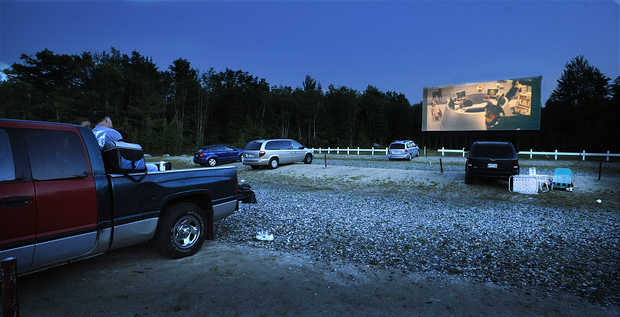Drive-in movie theaters are dinosaurs in this 21st-century age of multiplexes, megaplexes and the IMAX movie experience. They numbered in the thousands as their popularity rose in the 1950s and 1960s, but only about 400 are known to exist in the United States today. Today, the industry is just a glimmer of what it was once. Back in the 1950s, at the height of the drive-in era, there were 4,000 theaters showing first-run films — it was a marriage of two great American passions: automobiles and movies. The drive-in appealed to everyone — tired parents, who didn’t have to show up in the appropriate social dress code; teenagers, who just wanted a place to hang out with their friends; children, liberated from another boring night at home with the babysitter.
Thanks go to Richard M. Hollingshead, Jr., a chemical company magnate from Camden, N.J., who invented the drive-in three-quarters of a century ago. He spent hours in his backyard mapping out plans, figuring out which parking arrangements would offer the best views, what do in case of rain, and where exactly to place the radios. His test-runs involved a home projector fixed to the hood of his car. “My dad was a very inventive type of guy,” says Hollinghead’s son, Richard Hollingshead III. On June 6, 1933, the elder Hollingshead opened his first theater in nearby Pennsauken, with a screening of Wives Beware, starring Adolphe Menjou. More than 400 cars showed up to watch. Tickets cost about 75 cents.
Television, naturally, is largely responsible for the fall of the drive-in, but so are creeping suburbs, rising land values and the seasonal difficulty of operating an open-air business. Drive-in owners often can’t rely only on theater income to make ends meet. Some drive-ins hold swap meets to help cover costs. So, the theater’s grounds do double duty — market by day; drive-in by sunset, four nights a week.
That’s right, fill the car with blankets, pillows and kids and head to one of a handful of still operating drive-in theatres around the USA.
The drive-in is a cleat reminder of when land was cheaper and American car-culture was at its prime. At the peak of their popularity, there were 4330 drive-in theatres operating around the USA.
Things have changed from when Potsy and Ralph would borrow Mr C’s Desoto to ‘entertain’ the Polasky twins though. Once the domain of B-Grade horror and science-fiction movies for canoodling couples, the drive-in is now very much a family destination.
Wobbly finances aside, it seems that the drive-in is an American icon that will never completely fade — perhaps because of its irrefutable and enduring appeal, says Wright. “If it were just nostalgia, people would come one night and they would go ‘Okay, did that, check that off the list,’” Wright says. “But it’s not that. They literally are coming every week, week after week. On a beautiful night, with the stars out, it is an experience that I think will survive.
In May of this year, USA Drive-ins will be opening the second of a projected 17 drive-ins it has on its slate for 2016-2017. If movies are to still be a form of family entertainment, then it is imperative that drive-ins prosper.

